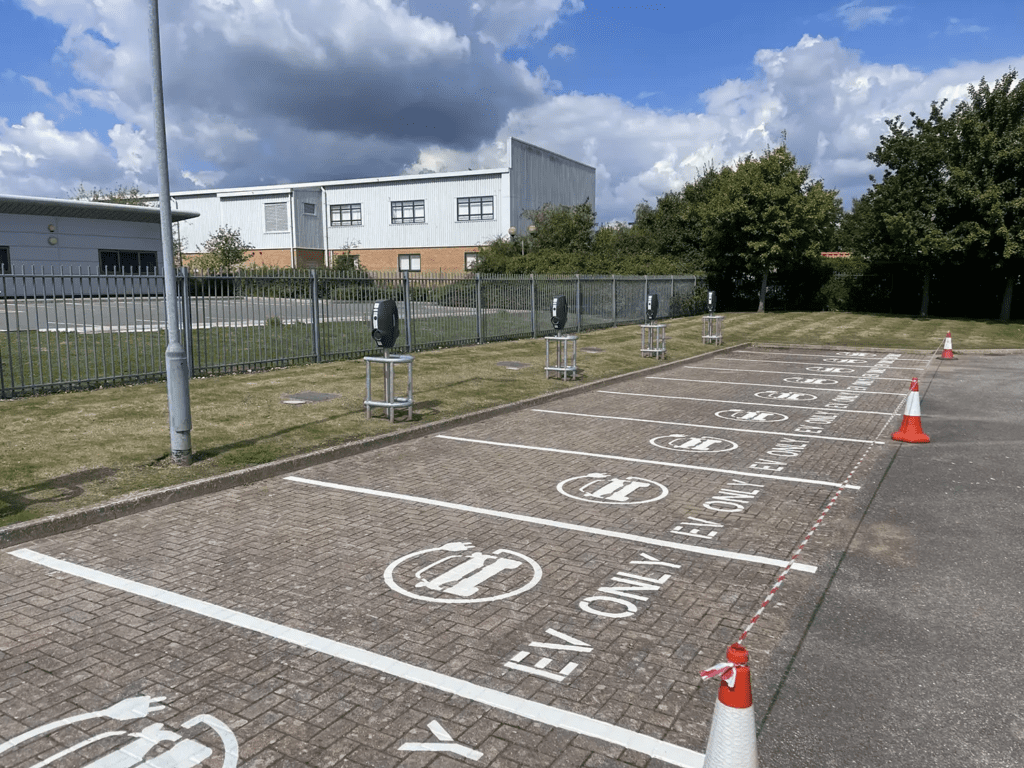Road Markings Alberta are essential for maintaining safety and order on Alberta’s roads. These markings guide drivers, cyclists, and pedestrians, ensuring smooth and efficient traffic flow. Alberta’s road marking system designs to be clear and consistent, providing crucial information at a glance. This article explores the various types of Road Markings Alberta, their meanings, and their importance in road safety.
Types Of Road Markings Alberta
Center Lines
Solid Yellow Line:
Indicates that passing is not allowed. It separates traffic moving in opposite directions.
Broken Yellow Line:
Allows passing when it is safe It also separates traffic moving in opposite directions.
Double Solid Yellow Lines:
Passing is not allowed in either direction. This is often found on roads with higher traffic volumes or more hazards.
Solid and Broken Yellow Line:
Passing is allowed from the side with the broken line but not from the side with the solid line.
Lane Dividers
Broken White Line:
Separates lanes of traffic moving in the same direction and allows lane changes when safe.
Solid White Line:
Indicates lane changes are discouraged but not illegal. It separates traffic moving in the same direction.
Double Solid White Lines:
Lane changes are not allowed.
Edge Lines
Solid White Edge Line:
Marks the edge of the road, providing a clear boundary for drivers.
Solid Yellow Edge Line:
Used on the left edge of divided highways and one-way streets to indicate the left boundary of the lane.
Crosswalks
Marked Crosswalks:
Consist of two parallel white lines or more elaborate zebra or ladder patterns to increase visibility. These are often found at intersections and pedestrian crossings.
Unmarked Crosswalks:
While not marked with lines, they still exist at most intersections and provide a legal crossing point for pedestrians.
Stop Lines and Yield Lines
Stop Lines:
Solid white lines across a lane indicating where vehicles must stop at stop signs or traffic signals.
Yield Lines:
A series of white triangles indicating where drivers must yield to other traffic or pedestrians.

Turn Arrows And Lane Use Arrows
Turn Arrows:
Indicate lanes where turns are mandatory or optional. These are essential for guiding traffic flow at intersections.
Lane Use Arrows:
Indicate specific uses for lanes, such as bus lanes, HOV lanes, or bike lanes.
Special Markings
HOV Lanes:
High Occupancy Vehicle lanes mark with a diamond symbol and are reserved for vehicles with multiple occupants.
Bike Lanes:
Marked with a bicycle symbol, these lanes design for cyclists.
School Zones and Crossings:
Often marked with bright yellow or white lines and additional symbols to indicate areas where children are likely to cross the street.
Importance Of Road Markings
Road Markings Alberta are crucial for several reasons:
Safety:
They provide clear guidance to drivers, reducing the risk of accidents. For instance, center lines prevent head-on collisions by keeping traffic moving in opposite directions separate.
Efficiency:
Proper lane markings help in managing traffic flow, reducing congestion, and ensuring that vehicles move smoothly through intersections and along highways.
Pedestrian Safety:
Crosswalks and pedestrian zones are vital for protecting those on foot, clearly indicating where it is safe for them to cross the road.
Compliance with Traffic Laws:
Road Markings Alberta help enforce traffic laws by indicating where vehicles must stop, yield, or where certain maneuvers prohibit.
Maintenance And Visibility
Maintaining the visibility of road markings is essential. Road Markings Alberta regularly inspects and repainted as necessary, especially in regions with harsh weather conditions that can cause them to wear quickly. Reflective materials often use to enhance visibility at night or in poor weather conditions.

Innovations and Future Trends
The future of road markings in Alberta may include several innovations aimed at improving safety and efficiency:
Smart Road Markings:
These involve the use of sensors and LED lights to provide real-time information to drivers about road conditions, traffic flow, and hazards.
Thermoplastic Markings:
These durable materials are becoming more popular due to their longevity and enhanced visibility.
Enhanced Reflectivity:
New technologies in reflective materials can improve visibility, making road markings more effective in various lighting and weather conditions.
Conclusion
Road markings are an integral part of Alberta’s transportation infrastructure. They play a critical role in ensuring the safety and efficiency of road users, from drivers and cyclists to pedestrians. Understanding the different types of Road Markings Alberta and their meanings can help all road users navigate more safely and confidently.
In Alberta, the consistent maintenance and potential future innovations in road markings with Pro Pavement Markings promise to continue enhancing road safety and traffic management. As the province grows and traffic demands increase, the importance of clear, visible, and effective Road Markings Alberta cannot overstate. By adhering to these markings, road users contribute to a safer and more efficient transportation system for everyone.

